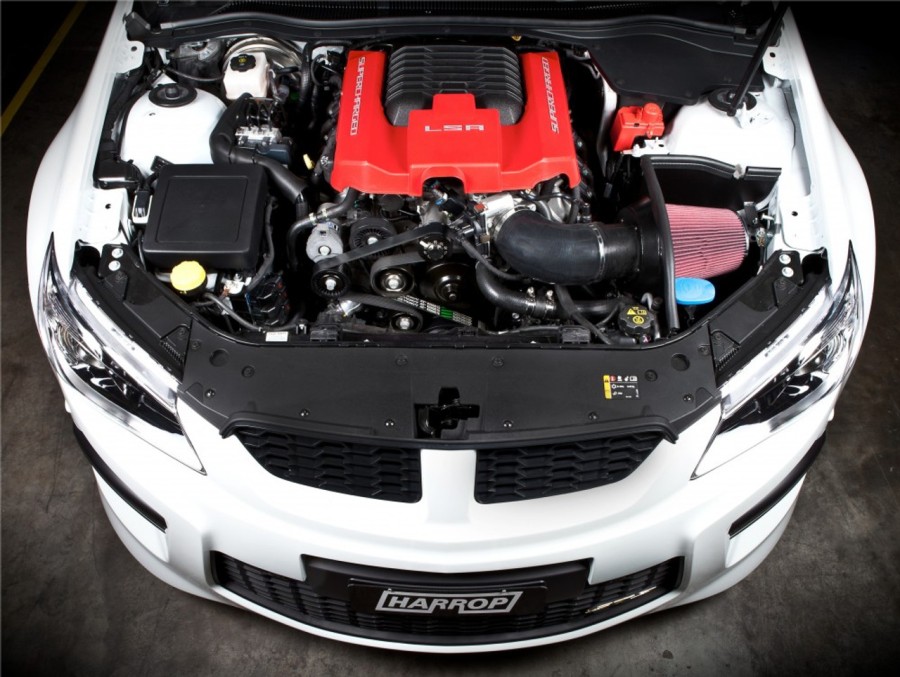How much horsepower your engine produces depends on dozens of variables, but pushing more air in for combustion is one way to bump up power over stock numbers. For this purpose, you’ll be looking at a performance or cold air intake system. These not only make for a faster car and one that’s undoubtedly more fun to drive, but are some of the more affordable performance parts out there, and are easy to install too.
The Basics of Performance Air Intakes

Air intakes filter and redirect outside air to the cylinders for combustion. In production cars, it’s the stock filters and tubing that are inhibiting factors, largely due to restrictions caused by small-diameter pipes, insufficient filtering and the heat generated from nearby engine parts. The amount of air getting in is adequate at most, but also low in oxygen due to higher temperatures.
What a performance air intake does is substantially increase the volume of air, while also scooping more of it from lower down. This means beefier tubing, aligned at straighter angles for faster flow, and air that is denser, oxygen-rich and much cooler to substantially boost power and torque output from every combustion cycle.
Parts and How They Work

Cold air intakes consist of reworked and relocated parts that are more efficient in getting more air into the engine. These include bigger, often cone-shaped filters pushed to the front of the engine, wider and straighter intake tubes that redirect air either directly to the throttle body or a bespoke air box and effective yet lightweight heat shields to reflect radiating heat from hot engine parts.
Bigger, high-flow (and reusable) filters can trap more contaminants, particularly dust and dirt particles while letting cleansed air pass, The intake tubes have fewer bends and are made of either reinforced, heat-resistant plastics or lightweight metals (usually aluminium). They connect the filter to the throttle body, or a relocated and bigger air box and feed the parts cooler air at optimal angles and higher speeds. To ensure flexibility and a snug fit, separate parts are connected with puncture and heat-resistant neoprene rubber boots. Heat shields shield the intake air from hot parts, particularly the turbine and exhaust manifold. More, fast-flow air and lower temperatures result in a cleaner and more efficient combustion cycle, essentially producing more horsepower and torque. These are not the only benefits of a performance air intake though.
Benefits of Cold Air Intakes

- More power, faster acceleration, better throttle response – improved airflow and oxygen-rich air means bigger bangs, more power through the wheels, and a faster car overall. The throttle is noticeably more responsive, and the car gets to speed faster. Estimates are that systems add 5 to 25 additional horsepower and up to 40Nm of torque.
- Fuel efficiency – cleaner combustion means less fuel use for the same power ratings as stock systems. You’ll be making fewer trips to the service station.
- Louder, deeper engine sound – faster airflow through wider tubing leads to a louder and raspier engine note.
- Better filtering and reduced maintenance – the inverted cone filters used in many cold air intake systems have better filtration with thicker cotton pleats, clearing out more contaminants. The filters are more forgiving on sensitive air (MAF, MAP) sensors lining the system. They are also reusable, so you’ll be saving money compared to the disposable filters found in stock systems.
- Easy installation – intakes come in a few design variations, but are some of the easiest aftermarket parts to install. They’re also some of the cheapest. Moderately priced intakes are additionally made of more durable materials, and the whole setup just looks better.
Main Types

Intakes differ in the parts they include and depend largely on the available space in the engine bay. Short ram intakes have shorter intake tracts to effectively improve throttle response. They also deliver high torque at lower RPMs and more rumble in the engine sound. Enclosed airbox systems have sealed airboxes to prevent dust and contaminants. They’re particularly good for off-roading. Ram-air intakes combine larger and more efficient filters pushed forward with scoops and ducts at the front of the bumpers to draw more cooled air at higher speeds. These are the preferred performance air intake designs for track use and racing.
Choosing the Right Intake System

Several factors will determine which system you buy. Most important is that the intake is compatible with the engine. The different parts need to fit the engine bay without (major) modifications that can impede overall performance.
Next, consider materials and build. Subpar filters or flimsy tubing won’t be of much help if the intake can’t do its main job. Look for the variety of filter options that best suit your needs, such as oiled, sealed or dry filters, and that they do a better job at removing particles. Also, consider the material in the tubing and how parts are assembled.
Lastly, go with respected brands that have done real-world testing. This ensures that the intake performs as it should, and won’t be the reason for unexpected changes to power bands or general reliability issues. For the asking price, the parts offer a lot for your money and are often the first mod before digging deeper into the engine internals.
